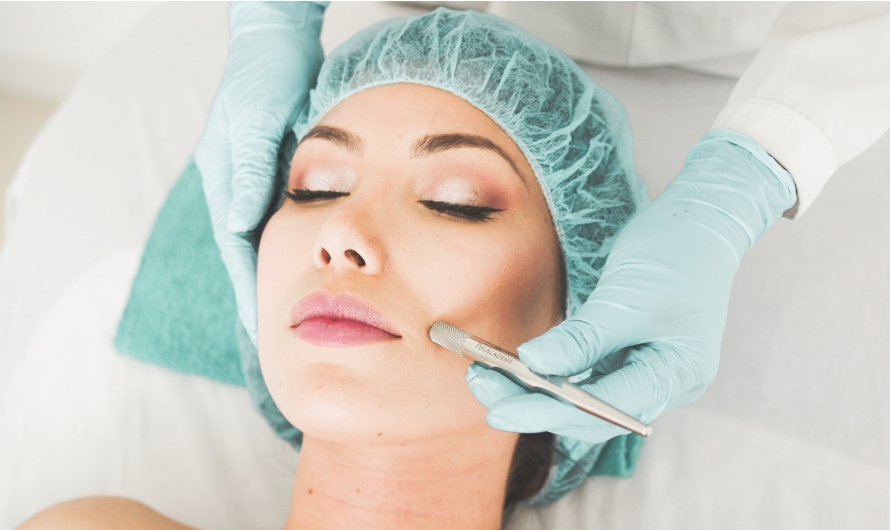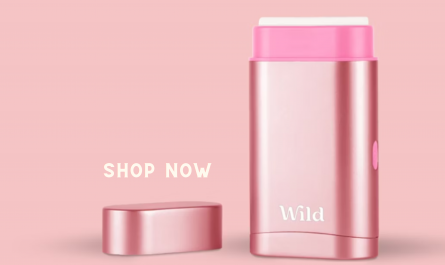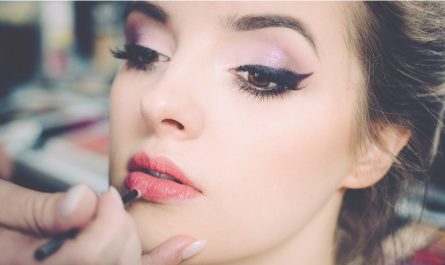A facial massage is a treatment that involves stimulating pressure points on your face, neck, and shoulders using your hands or tools. A facial massage can help improve your skin’s appearance, health, and function by:
- Increasing blood circulation and oxygen delivery to your skin cells
- Enhancing lymphatic drainage and toxin removal from your skin
- Relaxing your facial muscles and reducing tension and stress
- Boosting collagen production and elasticity in your skin
- Smoothing out fine lines and wrinkles
- Brightening your complexion and fading dark spots
- Hydrating and nourishing your skin
- Balancing your skin’s oil production and preventing acne
A facial massage can also have positive effects on your mood, energy, and overall well-being by:
- Releasing endorphins and serotonin that make you feel happy and relaxed
- Reducing cortisol levels that cause anxiety and inflammation
- Improving sleep quality and reducing insomnia
- Relieving headaches, sinus pressure, or pain
- Promoting self-care and mindfulness
You don’t need to go to a spa or spend a lot of money to enjoy the benefits of a facial massage. You can do it at home with simple products and tools that you may already have. All you need is some time, patience, and practice.
Before you start, you need to prepare your skin and tools for a facial massage. Here are some tips:
- Wash your hands thoroughly with soap and water or use a hand sanitizer.
- Tie your hair back or use a headband or clips to keep it away from your face.
- Remove any makeup, dirt, or oil from your face with a cleansing lotion or oil if you’re wearing makeup.
- Choose products that suit your skin type (oily, dry, normal, combination, or sensitive) and concerns (aging, dullness, pigmentation, inflammation, or acne). You will need a cleanser, an exfoliator, a facial mask, a facial oil or serum, and a moisturizer.
- Choose tools that suit your preference and budget. You can use your fingers or a tool such as a jade roller, a gua sha, or a massage device.
How to Do a Facial Massage at Home
Step 1: Cleanse your face with a gentle cleanser
The first step of any facial massage is cleansing. Cleansing removes any impurities from your skin that can clog your pores and cause breakouts. Cleansing also prepares your skin for the next steps of your facial massage, such as exfoliating, steaming, or applying treatments.
To use a cleanser properly, follow these steps:
- Wet your face with lukewarm water.
- Apply a small amount of cleanser to your hands and lather it up.
- Gently massage the cleanser onto your face in circular motions for about 30 seconds.
- Rinse off the cleanser with lukewarm water and pat your face dry with a soft towel.
- Cleanse your face twice a day, in the morning and at night.
Some examples of cleansers for different skin types are:
- For oily or acne-prone skin, use a salicylic acid or benzoyl peroxide cleanser that can unclog your pores, reduce inflammation, and kill bacteria. For example, you can try the Neutrogena Oil-Free Acne Wash Pink Grapefruit Facial Cleanser.
- For dry or mature skin, use a moisturizing glycolic acid or milky cleanser that can hydrate, exfoliate, and brighten your skin. For example, you can try the CeraVe Hydrating Facial Cleanser.
- For normal or combination skin, use a gentle or balanced cleanser that can cleanse without stripping or over-moisturizing your skin. For example, you can try the La Roche-Posay Toleriane Hydrating Gentle Cleanser.
- For sensitive or reactive skin, use a soothing or hypoallergenic cleanser that can calm, nourish, and protect your skin. For example, you can try the Aveeno Ultra-Calming Foaming Cleanser.
Step 2: Exfoliate your skin with a gentle exfoliator
The second step of any facial massage is exfoliating. Exfoliating removes dead skin cells from the surface of your skin that can make it look dull, rough, or uneven. Exfoliating also improves your skin’s texture, tone, and clarity by revealing the fresh and healthy skin underneath. Exfoliating also unclogs your pores, prevents ingrown hairs, and enhances the absorption of other skincare products.
To use an exfoliator properly, follow these steps:
- Wet your face with lukewarm water.
- Apply a small amount of exfoliator to your fingertips or a cotton pad and gently massage it onto your face in circular motions for about one minute. Avoid the eye area and any areas with cuts or abrasions.
- Rinse off the exfoliator with lukewarm water and pat your face dry with a soft towel.
- Apply a moisturizer to replenish the moisture lost from your skin.
- Exfoliate once or twice a week, preferably at night.
Some examples of exfoliators for different skin types are:
- For oily or acne-prone skin, use a salicylic acid or glycolic acid exfoliator that can penetrate deep into your pores and dissolve oil and dirt. For example, you can try the Paula’s Choice Skin Perfecting 2% BHA Liquid Exfoliant.
- For dry or mature skin, use a lactic acid or hyaluronic acid exfoliator that can hydrate and brighten your skin. For example, you can try the The Ordinary Lactic Acid 10% + HA.
- For normal or combination skin, use a gentle or balanced exfoliator that can refine and smooth your skin. For example, you can try the Dermalogica Daily Microfoliant.
- For sensitive or reactive skin, use a gentle or soothing exfoliator that can exfoliate without irritating your skin. For example, you can try the First Aid Beauty Facial Radiance Pads.
Step 3: Steam your face with a warm towel or a facial steamer
The third step of any facial massage is steaming. Steaming opens up your pores and loosens any dirt, oil, or impurities that may be trapped inside them. Steaming also softens your skin and makes it more receptive to other treatments. Steaming also relaxes your facial muscles and relieves any tension or stress.
To use a warm towel or a facial steamer properly, follow these steps:
- Boil some water in a pot or kettle and pour it into a large bowl.
- Add some drops of essential oil if you want to add some aroma or benefits to your steam. Some examples are lavender for relaxation, tea tree for antibacterial, or rose for hydration.
- Lean over the bowl and cover your head with a large towel to trap the steam. Keep your face about 10 inches away from the water to avoid burning yourself.
- Steam your face for about 10 minutes or until the water cools down.
- Alternatively, you can use a facial steamer device that produces steam for your face. Follow the instructions of the device and steam your face for the recommended time.
- Wipe off any excess moisture from your face with a soft towel.
- Steam your face once or twice a week, preferably before applying a facial mask or a treatment.
Step 4: Apply a facial mask that suits your skin needs
The fourth step of any facial massage is applying a facial mask. A facial mask is a product that covers your face with a layer of ingredients that can deliver specific benefits to your skin. A facial mask can hydrate, nourish, detoxify, brighten, soothe, or tighten your skin depending on its formula. A facial mask can also enhance the effects of other skincare products by creating an occlusive barrier that locks in moisture and nutrients.
To use a facial mask properly, follow these steps:
- Choose a facial mask that suits your skin needs and concerns. You can use a ready-made mask that comes in a tube, jar, or sheet, or you can make your own mask with natural ingredients such as honey, yogurt, oatmeal, or avocado.
- Apply a thin and even layer of the mask to your face using your fingers, a brush, or a spatula. Avoid the eye area and any areas with cuts or abrasions.
- Leave the mask on for the recommended time, usually between 10 to 20 minutes. Do not leave the mask on for longer than instructed as it may dry out or irritate your skin.
- Rinse off the mask with lukewarm water and pat your face dry with a soft towel.
- Apply a moisturizer to seal in the benefits of the mask.
- Use a facial mask once or twice a week, preferably after steaming your face.
Some examples of facial masks for different skin needs are:
- For hydrating and nourishing your skin, use a mask that contains ingredients such as hyaluronic acid, glycerin, aloe vera, or cucumber. For example, you can try the Neutrogena Hydro Boost Hydrating Hydrogel Mask.
- For detoxifying and purifying your skin, use a mask that contains ingredients such as charcoal, clay, or mud. For example, you can try the Origins Clear Improvement Active Charcoal Mask.
- For brightening and evening out your skin tone, use a mask that contains ingredients such as vitamin C, niacinamide, or licorice. For example, you can try the Tatcha Violet-C Radiance Mask.
- For soothing and calming your skin, use a mask that contains ingredients such as chamomile, calendula, or green tea. For example, you can try the Farmacy Honey Potion Renewing Antioxidant Hydration Mask.
- For tightening and firming your skin, use a mask that contains ingredients such as collagen, peptides, or caffeine. For example, you can try the Dr. Jart+ Shake & Shot Rubber Firming Mask.
Step 5: Treat your skin with your favorite facial oil or serum
The fifth step of any facial massage is treating your skin with your favorite facial oil or serum. A facial oil or serum is a concentrated product that contains high levels of active ingredients that can target specific skin concerns. A facial oil or serum can also nourish, repair, and protect your skin from environmental damage.
To use a facial oil or serum properly, follow these steps:
- Choose a facial oil or serum that suits your skin concerns and preferences. You can use an oil-based product that contains plant oils such as rosehip, jojoba, or argan oil. Or you can use a water-based product that contains vitamins such as vitamin A (retinol), vitamin B (niacinamide), vitamin C (ascorbic acid), or vitamin E (tocopherol).
- Apply a few drops of the oil or serum to your fingertips and warm it up by rubbing them together.
- Gently dab the oil or serum onto your forehead, cheeks, nose, and chin.
- Smooth the oil or serum over your face and neck in upward and outward motions.
- Avoid tugging or pulling your skin as you apply the oil or serum.
- Apply the oil or serum after cleansing and toning, and before moisturizing.
Some examples of facial oils or serums for different skin concerns are:
- For anti-aging and wrinkle reduction, use an oil or serum that contains retinol,peptides, or antioxidants. For example, you can try the RoC Retinol Correxion Deep Wrinkle Night Cream or the The Ordinary Buffet.
- For brightening and pigmentation correction, use an oil or serum that contains vitamin C, niacinamide, or licorice. For example, you can try the SkinCeuticals C E Ferulic or the Mad Hippie Vitamin C Serum.
- For hydrating and plumping your skin, use an oil or serum that contains hyaluronic acid, glycerin, or aloe vera. For example, you can try the Neutrogena Hydro Boost Hydrating Serum or the The Ordinary Hyaluronic Acid 2% + B5.
- For soothing and calming your skin, use an oil or serum that contains chamomile, calendula, or green tea. For example, you can try the Kiehl’s Midnight Recovery Concentrate or the Innisfree Green Tea Seed Serum.
- For balancing and regulating your skin, use an oil or serum that contains tea tree, lavender, or rosemary. For example, you can try the The Body Shop Tea Tree Oil or the Herbivore Lapis Facial Oil.
Step 6: Moisturize your skin with a suitable moisturizer
The sixth step of any facial massage is moisturizing your skin with a suitable moisturizer. A moisturizer is a product that helps your skin retain its natural moisture and prevent water loss. A moisturizer also helps your skin stay soft, smooth, plump, and elastic. A moisturizer can also protect your skin from environmental damage and reduce the signs of aging.
To use a moisturizer properly, follow these steps:
- Choose a moisturizer that suits your skin type and season. You may need different moisturizers for different times of the day. In the morning, you should use a lightweight moisturizer that can hydrate without making your skin greasy or interfering with your makeup. You should also look for a moisturizer that contains SPF or sun protection factor to shield your skin from harmful UV rays. In the night, you should use a richer moisturizer that can nourish and repair your skin while you sleep. You should also look for a moisturizer that contains anti-aging ingredients such as retinol, peptides, antioxidants, or hyaluronic acid to boost collagen production and smooth out wrinkles.
- Apply a pea-sized amount of moisturizer to your fingertips and warm it up by rubbing them together.
- Gently dab the moisturizer onto your forehead, cheeks, nose, and chin.
- Smooth the moisturizer over your face and neck in upward and outward motions.
- Avoid tugging or pulling your skin as you apply the moisturizer.
- Apply the moisturizer after cleansing and toning, and before sunscreen or makeup.
Some examples of moisturizers for different skin types and seasons are:
- For oily or acne-prone skin, use a gel or oil-free moisturizer that can hydrate without clogging your pores or causing breakouts. For example, you can try the Neutrogena Hydro Boost Water Gel.
- For dry or mature skin, use a cream or oil-based moisturizer that can replenish and lock in moisture. For example, you can try the Cetaphil Rich Hydrating Night Cream.
- For normal or combination skin, use a lotion or emulsion moisturizer that can balance and hydrate your skin. For example, you can try the Olay Regenerist Micro-Sculpting Cream.
- For sensitive or reactive skin, use a fragrance-free or hypoallergenic moisturizer that can soothe and protect your skin. For example, you can try the La Roche-Posay Toleriane Double Repair Face Moisturizer.
Step 7: Massage your face in a gentle circular motion using your fingers or a tool
The final step of any facial massage is massaging your face in a gentle circular motion using your fingers or a tool. Massaging your face can help improve blood circulation and lymph flow in your skin. Massaging your face can also relax your facial muscles and reduce tension and stress. Massaging your face can also enhance the effects of other skincare products by helping them penetrate deeper into your skin.
To use your fingers or a tool properly, follow these steps:
- Choose a tool that suits your preference and budget. You can use your fingers or a tool such as a jade roller, a gua sha, or a massage device. Each tool has its own benefits and techniques.
- A jade roller is a handheld device that has one or two rollers made of jade stone attached to it. Jade rollers are said to have cooling and healing properties that can reduce inflammation and puffiness in your skin. To use a jade roller, hold it by the handle and roll it gently over your face from the center to the sides in upward and outward motions. You can also place the jade roller in the fridge or freezer for a few minutes before using it to enhance its cooling effect.
- A gua sha is a flat tool that has a curved or angled edge made of stone, metal, or plastic. Gua sha is an ancient Chinese technique that involves scraping the skin with the tool to stimulate blood flow and release toxins. To use a gua sha, hold it by the edge and glide it gently over your face from the center to the sides in upward and outward motions. You can also apply some pressure along the contours of your face to sculpt and lift your features.
- A massage device is an electronic device that has a vibrating or rotating head that can massage your skin with different modes and intensities. Massage devices are said to have stimulating and rejuvenating effects that can improve skin elasticity and firmness. To use a massage device, hold it by the handle and move it gently over your face from the center to the sides in upward and outward motions. You can also adjust the mode and intensity according to your preference and comfort level.
- Massage your face for about 10 minutes or until you feel relaxed and refreshed.
- Massage your face once or twice a week, preferably after applying a facial oil or serum.
Conclusion
A facial massage is a great way to pamper yourself and improve your skin’s appearance, health, and function. By following these steps, you can do a facial massage at home with simple products and tools that you may already have. You can enjoy the benefits of a facial massage such as:
- Increasing blood circulation and oxygen delivery to your skin cells
- Enhancing lymphatic drainage and toxin removal from your skin
- Relaxing your facial muscles and reducing tension and stress
- Boosting collagen production and elasticity in your skin
- Smoothing out fine lines and wrinkles
- Brightening your complexion and fading dark spots
- Hydrating and nourishing your skin
- Balancing your skin’s oil production and preventing acne
A facial massage can also have positive effects on your mood, energy, and overall well-being by:
- Releasing endorphins and serotonin that make you feel happy and relaxed
- Reducing cortisol levels that cause anxiety and inflammation
- Improving sleep quality and reducing insomnia
- Relieving headaches, sinus pressure, or pain
- Promoting self-care and mindfulness
We hope you enjoyed this article and learned something new. If you have any questions, feedback, or suggestions, please feel free to share them with us. We would love to hear from you.
FAQs
Q: How often should I do a facial massage at home?
A: There is no definitive answer to this question, as it depends on various factors such as your skin type, condition, goals, preferences, time, and budget. However, some general guidelines are:
- You should do a facial massage at home once or twice a week to maintain your skin’s health and appearance.
- You should do a facial massage at home whenever you feel stressed, tired, or dull to relax and rejuvenate your skin and mind.
- You should do a facial massage at home before a special occasion or event to enhance your glow and confidence.
Q: How long should I do a facial massage at home?
A: There is no definitive answer to this question, as it depends on various factors such as your skin type, condition, goals, preferences, time, and budget. However, some general guidelines are:
- You should do a facial massage at home for at least 10 minutes to get the full benefits of the treatment.
- You should do a facial massage at home for no longer than 30 minutes to avoid overstimulating or irritating your skin.
- You should do a facial massage at home at your own pace and comfort level.
Q: What are some precautions or contraindications for doing a facial massage at home?
A: While doing a facial massage at home is generally safe and beneficial for most people, there are some precautions or contraindications that you should be aware of. You should avoid doing a facial massage at home if you have any of the following conditions:
- Active acne, wounds, infections, or inflammation on your skin
- Allergies or sensitivities to any of the products or tools that you use
- Skin diseases or disorders such as eczema, psoriasis, rosacea, or dermatitis
- Medical conditions or disorders such as diabetes, high blood pressure, blood clotting disorders, or cancer
- Recent surgeries or treatments such as botox, fillers, lasers, or chemical peels
If you have any of these conditions, you should consult with your doctor or dermatologist before doing a facial massage at home. They can advise you on the best course of action for your skin’s safety and well-being.
Q: Can I do a facial massage at home with any products or tools that I have?
A: You can do a facial massage at home with any products or tools that you have, as long as they are suitable for your skin type and concerns. However, you should always check the ingredients, expiration dates, and instructions of the products or tools that you use. You should also do a patch test before applying them to your face, especially if you have sensitive or reactive skin. You should also clean and sanitize your tools before and after using them to prevent any contamination or infection.
Q: What are some tips or tricks to make my facial massage at home more enjoyable and effective?
A: Here are some tips or tricks to make your facial massage at home more enjoyable and effective:
- Set the mood by playing some relaxing music, lighting some candles, or diffusing some aromatherapy oils.
- Use warm water to wash your face and warm your products and tools before applying them to your skin.
- Use gentle pressure and slow movements when massaging your face. Do not pull, stretch, or drag your skin.
- Follow the natural contours and muscles of your face. Start from the center and move to the sides, and from the bottom and move to the top.
- Breathe deeply and evenly as you massage your face. Focus on the sensations and feelings that you experience.
- Drink plenty of water after your facial massage to flush out any toxins and hydrate your skin.




